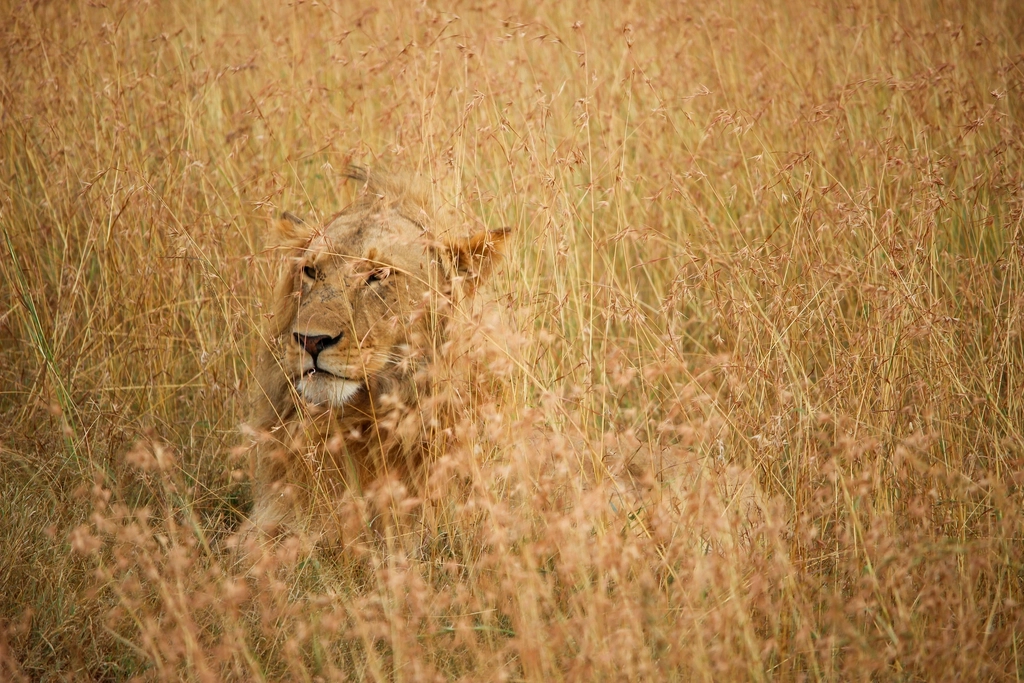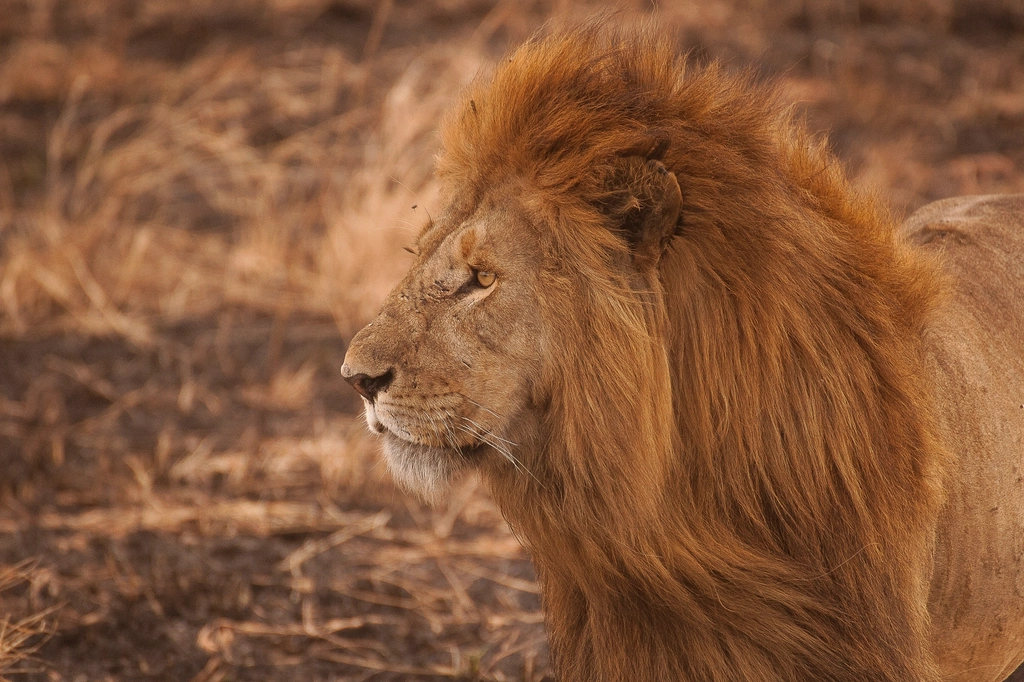Have you ever caught yourself staring at a lion, completely mesmerized by that wild, untamed mane? There’s something almost magical about it. The lion’s mane isn’t just a fluffy crown—it’s a badge of honor, a weather report, and a fashion statement, all rolled into one. Get ready for a whirlwind gallery of 25 jaw-dropping, quirky, and heart-tugging mane facts that’ll change the way you see these majestic cats forever!
The Mane’s Real Superpower: Protection in Battle

One of the mane’s main jobs is to serve as a built-in shield. When male lions fight, they go for the neck and head—prime mane territory. That thick fur isn’t just for show; it actually helps absorb bites and scratches, making it harder for rivals to land a serious injury. It’s like having a permanent, fuzzy suit of armor. So next time you see a lion, just imagine him in a knight’s helmet, ready for a medieval showdown!
Mane Color Signals Strength and Power

It turns out, not all manes are created equal. Some lions have pale, almost blonde manes, while others sport rich, dark chocolate shades. The darker the mane, the stronger and more dominant the lion usually is. That deep hue is like a flashing neon sign to rivals and potential mates: “I’m the boss around here!” Plus, lionesses seem to swoon over those with the darkest, fullest manes.
The Mane Grows with Age (and Testosterone!)

A lion’s mane doesn’t just pop up overnight. It starts appearing when males are about one year old and keeps getting longer and bushier as they age. The real secret sauce? Testosterone! The more of this hormone a lion has, the more impressive his mane will be. It’s nature’s way of saying, “Check out how grown-up I am!”
Manes Keep Lions Toasty in Chilly Weather

Believe it or not, those big, fluffy manes do more than look majestic—they help keep lions warm when temperatures drop. In cooler climates (like the highlands of East Africa), manes grow even thicker and longer, acting like a cozy scarf wrapped around their necks. It’s the feline version of bundling up when winter hits!
Manes Are Surprisingly Rare for Females

You might think all lions have manes, but that’s not true. Female lions, called lionesses, almost never grow manes. When they do, it’s usually because of a hormonal quirk or genetic surprise. These rare “maned lionesses” often become instant celebrities among scientists and safari-goers alike. Imagine spotting a lioness with a rockstar hairdo—now that’s a story to tell!
The Mane’s Length Can Predict a Lion’s Health

A scruffy, patchy mane isn’t just a bad hair day—it’s often a sign that something’s wrong. Healthy, well-fed lions have lush, flowing manes. If a mane looks thin or ragged, the lion might be sick, stressed, or undernourished. It’s like reading a health chart, but much more dramatic!
Manes Make Lions Look Bigger (and Scarier!)

Size matters in the wild, and a full mane makes a lion look much bigger than he actually is. This optical illusion can intimidate rivals and scare off would-be attackers, including hyenas and wild dogs. It’s like putting on a superhero cape—suddenly, you’re larger than life!
Extreme Heat Can Shrink a Lion’s Mane

While manes keep lions warm, they can be a curse in hot climates. In places where temperatures soar, lions often have shorter, thinner manes—or sometimes, barely any mane at all! It’s nature’s way of helping them stay cool and avoid heatstroke. Think of it as trading a winter parka for a breezy summer tee.
Some Lions Lose Their Manes Altogether

Not every male lion keeps his mane for life. Sometimes, due to injury, illness, or extreme stress, a lion’s mane can fall out completely. These “maneless” males often look quite different from their majestic counterparts, but they can still rule a pride if they’ve got the guts (and attitude) to back it up!
Genetics Play a Big Role in Mane Style

Just like people inherit curly or straight hair, lions inherit their mane style from their parents. Some bloodlines produce lions with ultra-long, flowing manes, while others stick with a short and scruffy look. It’s all in the family genes—proof that even in the wild, fashion runs in the family!
Mane Development Signals Sexual Maturity

When a young male’s mane starts to come in, it’s a big deal. It means he’s growing up and ready to compete for a place in the pride. Other lions take notice, too—both rivals and females. It’s like a teen finally sprouting facial hair; suddenly, everyone’s paying attention!
Female Lions Use Manes to Choose Mates

Lionesses are picky when it comes to choosing a mate. Studies have shown they prefer males with fuller, darker manes because it suggests strength, good genes, and proven survival skills. In the lion dating world, a fabulous mane is the ultimate pickup line!
Manes Are Unique Like Human Fingerprints

No two lion manes are exactly the same. Each one has its own pattern, color, and length, making it possible for researchers (and even other lions) to tell individuals apart. It’s like having a natural name tag—no mane twins in the savannah!
Some Wild Lions Have Mohawks

Not all manes are fluffy and rounded; some lions actually look like they’re sporting a wild mohawk! These edgy styles happen when the mane grows thickest along the top of the head and neck. It’s the punk rock look of the animal kingdom, and it totally stands out in the crowd.
Manes Can Hide Old Battle Scars

A lion’s mane isn’t just armor—it’s also a secret keeper. Beneath all that hair, many males have scars from past fights. The mane helps cover these up, so rivals and potential mates don’t immediately see just how many battles a lion has survived. Talk about hiding your wild side!
Manes Help Cubs Recognize Their Dads

Lion cubs rely on sight to identify pride members, and the mane makes it easy to spot Dad from a distance. That big, bushy outline stands out like a beacon on the plains. Even among a crowd of lions, there’s no mistaking the king of the pride!
Manes Can Change Over a Lion’s Life

A lion’s mane isn’t a “set it and forget it” feature. It can change color, length, and fullness as the lion ages or faces different life events. For example, stress or illness can cause it to thin, while a healthy diet and a winning streak in fights can make it flourish. It’s like your hairstyle evolving as you grow up!
The Mane’s Scent Tells a Secret Story

Lions use scent to communicate, and the mane plays a part in this. Oils and pheromones collect in the fur, sending out messages to other lions about age, health, and status. One good sniff, and a rival knows exactly who he’s dealing with—no business cards required.
Some Subspecies Have Barely Any Manes

Not all lions are created with big manes. For example, the Tsavo lions of Kenya are famous for their almost maneless appearance. The harsh, hot climate means these cats skip the heavy fur, proving that even in the wild, style is all about location!
Manes Can Grow in Odd Directions

Every so often, a lion’s mane grows in wild, unexpected ways—swirling to one side, forming cowlicks, or puffing up in funny shapes. These “bad hair days” make for some hilarious lion portraits, and they remind us that even kings have their off days.
The Mane Helps in Pride Takeovers

When a new male challenges the pride leader, his impressive mane can give him the edge. A showy mane signals confidence and strength before the fight even begins, sometimes helping him win the pride without a single scratch. It’s the ultimate stare-down accessory!
Mane Growth Can Be Affected by Nutrition

Diet matters—even for lions! If a male isn’t getting enough nutrients, his mane can become dull or stunted. A rich, protein-packed diet, on the other hand, fuels luxurious mane growth. It’s a reminder that even the king needs to eat his veggies (or, well, his antelope!).
Manes Can Attract Unwanted Attention

While a big mane is great for impressing lionesses, it also makes a lion more visible to enemies and prey. Sometimes, blending in would be the smarter move, but the mane doesn’t exactly come with a “stealth mode” option!
Some Lions Change Mane Color with the Seasons

Believe it or not, a lion’s mane can lighten or darken with the changing seasons. Hot, dry weather can bleach the hair, while cooler, wet months might deepen the color. It’s like having a wardrobe that updates with the weather—nature’s own fashion statement.
Manes Have Inspired Human Culture for Centuries

From ancient statues to sports team mascots, the lion’s mane has long stood for courage, royalty, and power. People across the world have looked to that wild crown as a symbol of strength and majesty. It’s not just hair—it’s history, legend, and inspiration, all in one unforgettable mane.
Which of these mane marvels left you amazed? If you could meet any lion from this list, which would you choose?

Suhail Ahmed is a passionate digital professional and nature enthusiast with over 8 years of experience in content strategy, SEO, web development, and digital operations. Alongside his freelance journey, Suhail actively contributes to nature and wildlife platforms like Feline Fam, where he channels his curiosity for the Feline into engaging, educational storytelling.
With a strong background in managing digital ecosystems — from ecommerce stores and WordPress websites to social media and automation — Suhail merges technical precision with creative insight. His content reflects a rare balance: SEO-friendly yet deeply human, data-informed yet emotionally resonant.
Driven by a love for discovery and storytelling, Suhail believes in using digital platforms to amplify causes that matter — especially those protecting Earth’s biodiversity and inspiring sustainable living. Whether he’s managing online projects or crafting wildlife content, his goal remains the same: to inform, inspire, and leave a positive digital footprint.






